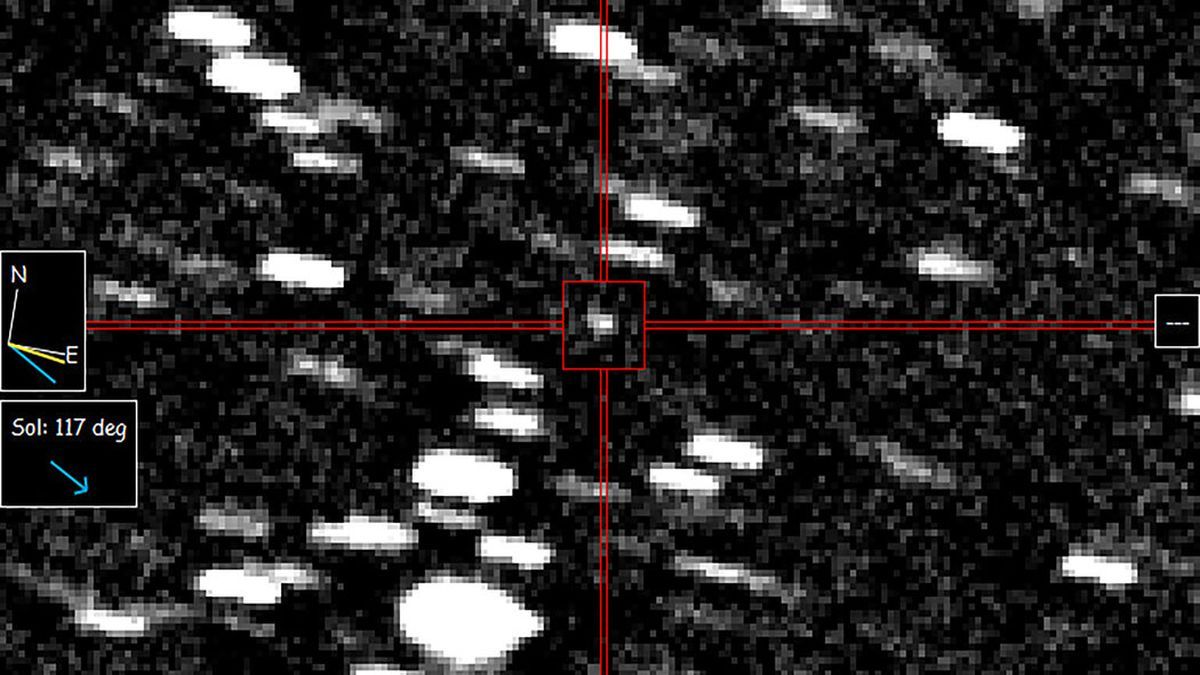An object from interstellar space It was detected by crossing the solar system at high speed, becoming the third visitor of this type never observed by humanity, as confirmed astronomers. Fortunately, it does not represent any threat of impact for the earth.
The celestial body, possibly the largest in its class recorded so far, has been called 3I/Atlas and classified as kite by the Minor Planets Center of the International Astronomical Union (UAI). His appearance suggests that it is mostly composed of ice, instead of rock, explained Jonathan McDowell, astronomer of the Harvard-Smithsonian astrophysics center, to the AFP agency.
Richard Moissl, head of planetary defense of the European Space Agency (ESA), said there is no risk of collision with our planet. “It will pass deeply within the solar system, crossing the orbit of Mars,” he said, added that he will do it at a speed of up to 60 kilometers per secondequivalent to more than 200,000 kilometers per hour.
The object was discovered on Tuesday by a Chilean Observatory as part of the Atlas projectan asteroid monitoring program funded by NASA. Astronomer David Rankin reported the finding through the Bluesky social network. Following this, astronomers around the world professionals and fans began to analyze the data collected by telescopes to track their career since June 14.
ATLAS SPACE 2.AVIF
This object does not represent any threat of impact for the earth.
Created with Ia.
It is estimated that the object has a diameter between 10 and 20 kilometersalthough it could be smaller if it is composed of ice, which reflects more sunlight. “It will be increasingly brilliant and will approach the sun until the end of October. It can continue to be observed with telescopes until next year,” said the specialists.
What were the other interstellar objects detected?
The first interstellar object identified was Oumuamuain 2017. the second, 2i/Borisovwas observed in 2019. Oumuamua, in an elongated and rocky appearance, it was so unusual that some scientists came to raise the possibility that it was a ship of extraterrestrial origin, although this theory was subsequently discarded after more detailed studies.
These discoveries have been possible thanks to the constant advancement of technology and the growing number of astronomical observations, which has significantly improved our ability to detect celestial bodies from other star systems, as experts from the center of minor planets explained.
An unusual opportunity
There are no reasons to suspect that 3i/Atlas have an artificial origin, but scientific teams around the world work to counterreloj to answer key questions about their shape, composition and rotation.
Mark Norris, an astronomer from the University of Central Lancashire, in the United Kingdom, told the AFP agency that this new object seems to “move considerably faster than the other two extrasolar objects that we discovered previously.” Currently, it is located at a distance from the land similar to that of Jupiter, the specialist explained.
Norris also mentioned models that estimate the possible existence of up to 10,000 interstellar objects crossing the solar system at a given time, although most would be smaller than the recently detected.
Source: Ambito




